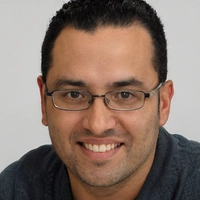
Ever wondered why we call some colleges “normal schools”—what’s normal about them? Here’s an odd bit: these places have shaped our classrooms and teachers for nearly two centuries, but hardly anyone remembers what they were really for. The term isn’t about average or regular. It’s a throwback to a standard, or a “norm,” of teaching future educators. Let’s crack open what a teacher training school is really called, what happens inside, and why these institutions still matter in a world where “anyone can teach online”—or can they?
Understanding the Names: What is a Teacher Training School Also Called?
When people talk about teacher training schools, you’ll hear a few names tossed around. The oldest and most curious is “normal school.” This term started in France—école normale—back in the late 18th century. The word “normal” isn’t about being basic; it means “standard-bearing.” These schools were built to create a gold standard for teacher knowledge and practice. By the 19th century, the name spread to the US, the UK, Australia, and beyond.
These days, you’re more likely to see names like “school of education,” “faculty of education,” or “teacher training college.” In Australia, for example, places like Melbourne’s own University of Melbourne Graduate School of Education don’t use the old normal school tag, but the mission hasn’t changed: they shape the next wave of teachers. In India and some Asian countries, you might hear “teacher training institute” or “B.Ed. college.” Each label points to the same idea—a place built specifically to teach the art and science of teaching.
Some quick facts: The very first normal school in the US opened in 1839 in Lexington, Massachusetts. By the early 20th century, there were hundreds. In fact, many famous universities—like Illinois State University—started as normal schools and dropped the name as they expanded. The essential concept lingers, even if the names change. You’ll spot these schools operating as university departments, stand-alone institutions, or even dedicated online academies.
The Role and Purpose of a Teacher Training School
A teacher training school isn’t your average college—its core purpose is to turn people into confident, skilled teachers. But how exactly does it do that? There’s more to teaching than knowing your subject. You’ll need to learn classroom management, student psychology, curriculum design, assessment, and the art of explaining ideas in fifty different ways for students who pick things up differently. That’s a lot more than learning math, history, or English. It’s a full toolkit for a job that combines performance, counseling, and crowd control—plus heaps of paperwork.
Programs at teacher training schools might run from a one-year graduate diploma to a full four-year Bachelor of Education. The structure usually combines university-level courses—lots of theory and research findings—with practical teaching placements. These placements are critical. You get thrown into real classrooms to try out lesson plans, practice managing groups, and get honest feedback from experienced mentors. Sure, it’s nerve-wracking (who isn’t terrified that first day?) but it’s the fastest way to learn the ropes.
In Australia, it’s common to complete a Bachelor of Teaching or a Master of Teaching after your first degree. In the US and UK, teaching credentials often require passing tests, demonstrating subject knowledge, and meeting classroom observation hours. Some colleges—like Harvard’s Graduate School of Education or Monash University in Australia—are known for shaping education research as much as teachers themselves. The biggest trend in the past ten years? Spreading these programs online, letting aspiring teachers fit study around work or family. But one thing hasn’t changed: practical experience always tops the list.

Core Curriculum and Hands-On Training
What exactly do future teachers learn in these schools? You’ll find a mix of the practical—lesson planning, assessment, classroom management—and the deeply theoretical, like developmental psychology and how kids’ brains work. Here’s a rough layout of what you might cover:
- Educational Psychology
- Learning Theories
- Curriculum and Instruction Planning
- Lesson and Unit Design
- Assessment and Evaluation Methods
- Classroom Management
- Inclusivity and Special Needs
- Technology Integration
- Professional Standards and Ethics
- Extensive Practical Placements in Real Schools
One surprising thing: in Australia, even experienced teachers often return for “professional development” at the same schools. It isn’t just a route for fresh graduates—teachers are constantly updating their knowledge, whether it’s about literacy strategies or new digital tools. Placements or “practicums” are big everywhere. Typically, you’ll spend about 60-100 days in a classroom, under the watchful eye of a seasoned teacher, before you can graduate.
Some schools split students into groups—primary, secondary, or early childhood—because each level demands different teaching chops. You’ll also learn how to spot students needing extra support, recognize learning disabilities, and develop skills for working in multicultural or remote communities. The international flavor is growing, too, as schools prep teachers to work anywhere from rural outback Australia to London’s inner suburbs or even internationally.
Here’s a sample of minimum practical placements for teaching degrees in Australia and some countries:
| Country | Primary Teaching Practicum (Days) | Secondary Teaching Practicum (Days) |
|---|---|---|
| Australia | 80 | 80 |
| UK | 120 | 120 |
| USA | 40-60 | 40-60 |
| India | 30-45 | 30-45 |
So yeah, it’s intense—especially when you’re prepping lessons late at night and racing to keep up with all the assignments.
The Pathways to Teaching: Certificates, Degrees, and Licenses
Not every teacher’s story starts the same way. In some countries, you dive straight into a four-year Bachelor of Education—done and dusted. In others, you earn a degree in your favorite subject (math, English, science) and then top up with a teaching diploma or certificate. The big goal? Earning your teaching credential or license. Without it, you won’t be standing in front of a class anytime soon.
In the United States, things get complicated—every state has slightly different requirements. Usually, you’ll need a bachelor’s degree, a dedicated teacher training program, and you have to pass a test or two. In places like Texas or California, there are extra hoops, like background checks, fingerprinting, or extra exams on state-specific curriculum rules. Here’s a little breakdown showing typical teacher pathways in a table:
| Country | Usual Teacher Training Route | Teacher License Required? |
|---|---|---|
| Australia | Bachelor or Master in Teaching/Education | Yes |
| UK | Bachelor of Education or PGCE | Yes |
| USA | Bachelor+Certification Program | Yes |
| India | B.Ed. after Bachelor’s degree | Yes |
And then there’s the fast-track route. Some places are short on teachers (think: rural areas, STEM subjects), so they run special programs like Teach for America or Teach First in the UK. You might train on the job—coaching from a mentor plus night-time coursework. It’s not for the faint-hearted, but it’s opened doors for thousands of would-be teachers who didn’t start out at a traditional teacher training school.

Tips for Choosing the Right Teacher Training School
Thinking of signing up? Picking the right teacher training school is a big deal—it shapes your career, your knowledge, and how confident you’ll feel in front of thirty teenagers staring back at you. Here’s what to look for so you don’t end up miserable (or broke):
- Check accreditation: You want your degree to count—make sure the school is recognised by the right government or education body.
- Research program reputation: Ask current and former students about hands-on experience, support, and job prospects. Some programs have legendary mentors or unique placements (think: Indigenous communities, inner-city schools, or schools in Europe).
- Practical placements: More is better. Look for schools that offer plenty of time in real classrooms.
- Job placement rates: Ask where graduates land jobs. Do local schools hire from this program?
- Support for new teachers: Does the school check in after you graduate? Some keep coaching you through that tough first year.
- Flexibility: Can you study part-time? Is there online support if you’re juggling work or a family?
- Specialties: Want to focus on Special Education, Literacy, or EdTech? Make sure the program offers electives that fit your passion.
- Cost: Watch for hidden fees—like placement administration or extra materials. Ask about scholarships or government loan support.
You can always check rankings and government reports, but nothing beats a chat with recent graduates. Some teaching programs even have a “try before you buy” info day. It’s worth seeing what real classes are like before you sign up.
Don’t forget: every country has its quirks. In Australia, teacher shortages have sparked new “earn-and-learn” models, letting would-be teachers work in schools while training. In Canada, “faculty of education” is the label to look for. And if you already have years of experience in another profession? There are conversion courses everywhere—teaching welcomes career switchers with open arms (and full classrooms to manage).
Sure, teaching sounds tough. But stepping through the doors of a teacher training school—whatever it’s called—means you’re learning more than the curriculum. You pick up what it really takes to last a lifetime in front of the chalkboard (or Google Classroom), helping kids learn, grow, and maybe change the world, one ordinary day at a time.
